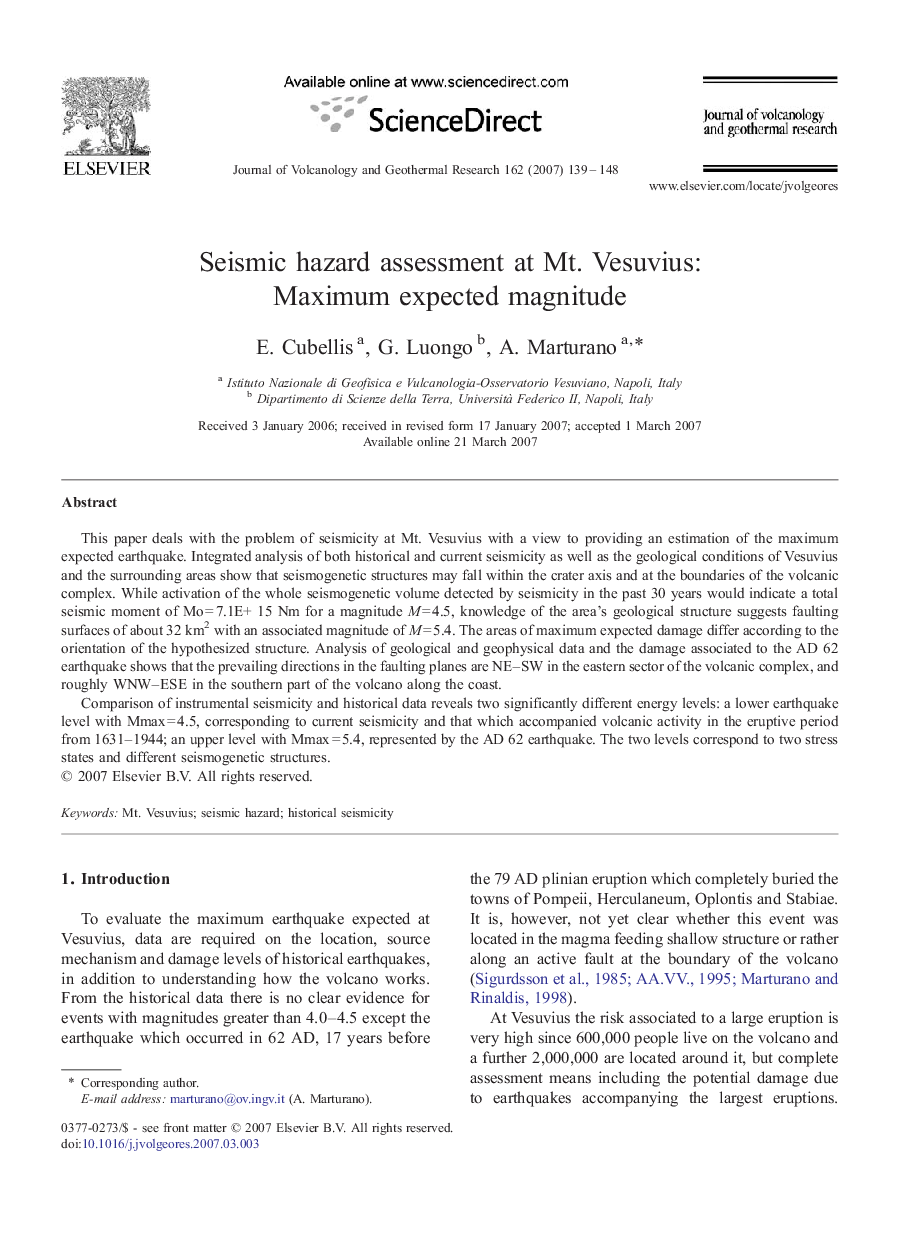| Article ID | Journal | Published Year | Pages | File Type |
|---|---|---|---|---|
| 4714911 | Journal of Volcanology and Geothermal Research | 2007 | 10 Pages |
This paper deals with the problem of seismicity at Mt. Vesuvius with a view to providing an estimation of the maximum expected earthquake. Integrated analysis of both historical and current seismicity as well as the geological conditions of Vesuvius and the surrounding areas show that seismogenetic structures may fall within the crater axis and at the boundaries of the volcanic complex. While activation of the whole seismogenetic volume detected by seismicity in the past 30 years would indicate a total seismic moment of Mo = 7.1E+ 15 Nm for a magnitude M = 4.5, knowledge of the area's geological structure suggests faulting surfaces of about 32 km2 with an associated magnitude of M = 5.4. The areas of maximum expected damage differ according to the orientation of the hypothesized structure. Analysis of geological and geophysical data and the damage associated to the AD 62 earthquake shows that the prevailing directions in the faulting planes are NE–SW in the eastern sector of the volcanic complex, and roughly WNW–ESE in the southern part of the volcano along the coast.Comparison of instrumental seismicity and historical data reveals two significantly different energy levels: a lower earthquake level with Mmax = 4.5, corresponding to current seismicity and that which accompanied volcanic activity in the eruptive period from 1631–1944; an upper level with Mmax = 5.4, represented by the AD 62 earthquake. The two levels correspond to two stress states and different seismogenetic structures.
